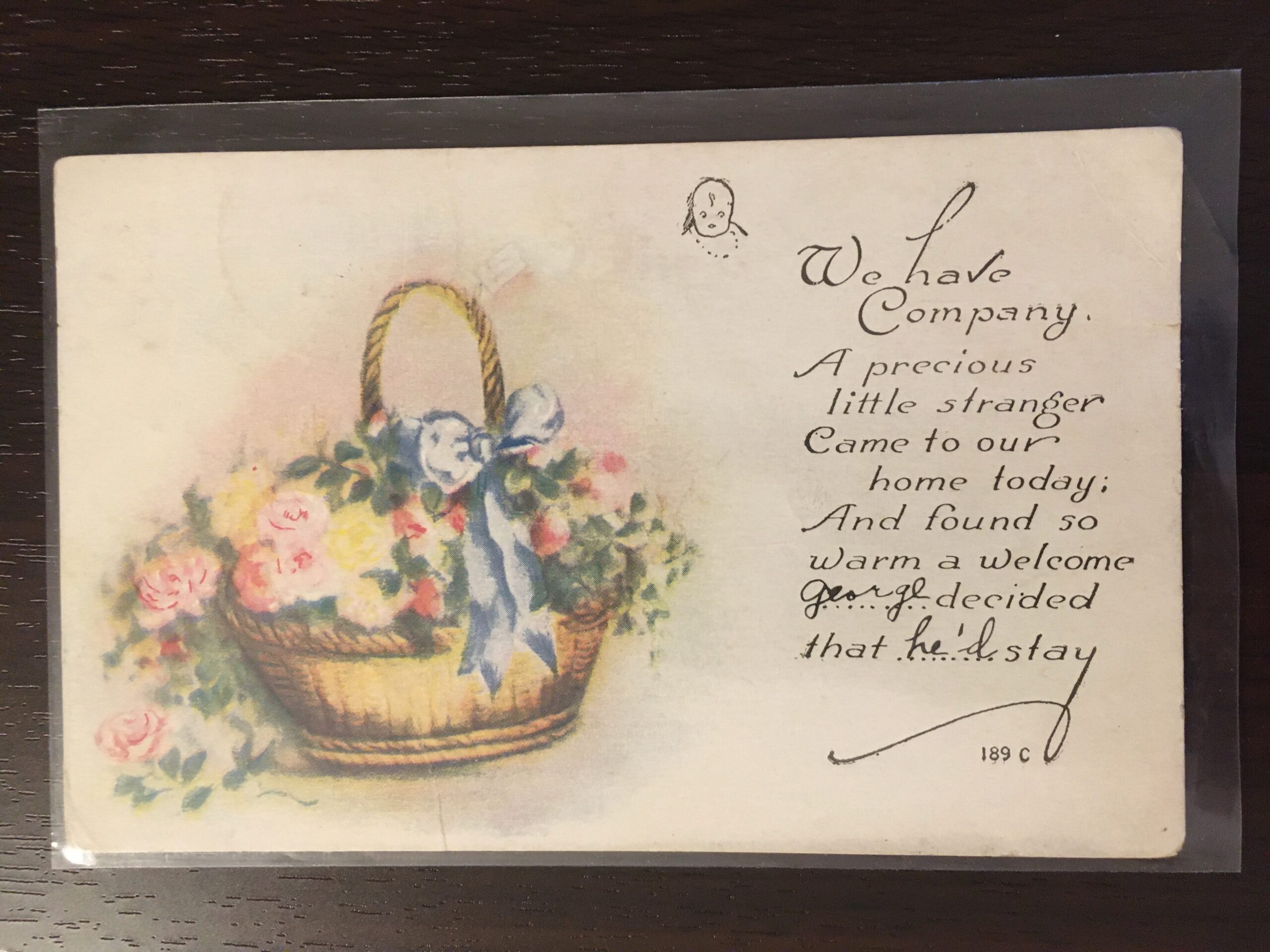Presentation/Appearance
Includes sub-categories relating to postcard type and visual appearance or quirks.
-
Very Fond of Children and the Pacific Coast Limited
Katheryn McMahon Newton Album, cards 20-22, 24 Today’s is a bit of a miscellany. First is a travel postcard produced by the Metropolitan News Co., a northeastern firm responsible for a number of regional-oriented images. This particular card has no inscription whatsoever. The sender evidently presumed Anna McMahon would understand from whom it came–likely the only person she knew in Boston at the time. As a side point, according to Google Maps 1800 State Street is about midway between the two addresses we have for Katheryn McMahon. 2621 South Shields Avenue (Google is not currently offering me an option for North Shields) is about 1.5 miles walk south-southwest. 315 Wabash…
-
Altered Images, Love Letters, and Guilt Trips
Katheryn McMahon Album, cards 16-19 If a picture is worth a thousand words, what is the worth of a picture with words added? This post has two examples of a benefit some people found in sending postcards versus letters: the opportunity to interact with the image on the front. A classic method is for a sender to inscribe initials or names on people portrayed on the front of the card–even or especially when the images were mass produced and patently not the sender, addressee, or anyone they knew. Fred did this himself, as shown in the post on 11 January, when he added Katheryn’s and his initials to a man…
-
My Little Pal Out Here (a Lonely Heart in Colorado Springs)
Katheryn McMahon Newton Album, cards 13-15 Fred wrote and sent this postcard only a day or so before he sent Katheryn the album to store her postcards in. Or did he in fact write this on the 12th of February and the inscription in the album on the 14th? Dates are funny things, after all, and subject to flux. The dates Fred inscribes might represent the days he’s actually sitting down or the days he wants associated with whatever he’s writing. These are usually the same thing, or close enough to make no difference–and barring evidence otherwise I’m willing to take his dates as good. Particularly because most of the…
-
A Musical Mystery? Crack an old Postcard Code
Shorthand and use of non-English languages reduced the number of people who might read a given post card. Nevertheless, senders still ran the risk of postal workers and others (family members, friends, neighbors) being able to read the cards. Perhaps more the case with non-English languages sent from or delivered to ethnic and/or diverse neighborhoods, but more people may have been able to read shorthand then than now. And then there are codes. It will likely come as no surprise that some people used codes to communicate through postcards. With codes, the recipient had to have the key to decipher the message–but codes likely defeated casual readers. As a matter…
-
Keeping Secrets? Messages in Shorthand on Postcards
Last post introduced Clara Stahl and Agnes Naylor, two stenographers in Grinnell, Iowa, in the early twentieth century. Both collected postcards, and agreed to exchange cards (i.e. send them to each other) to help increase their respective collections. We know this thanks to a typewritten card Clara sent to Agnes. Typewritten cards offered highly legible messages for recipients to read. (Typewritten messages are also much appreciated by many historians.) Clara clearly didn’t mind anyone and everyone reading that message. Nor did she likely worry about messages she composed in handwritten English. After all, the very nature of postcards meant anyone who got their hands on one–such as a postal worker…
-
Housewives and Handiwork: Tracking Domestic Friendships Through a Doily
Something a bit different for this third Real Photo Postcard (RPPC) in a row — there’s not a person in sight. People used cameras and postcards to document and share all manner of things including dead pets (I don’t own any, but I’ve seen them), caterpillars under canvas (from a research site), and . . . doilies. I don’t know enough about handicrafts such as this to say much about it. What follows here is largely speculation. If you look closely, you can see the cloth features a rose pattern. It may be damask or some other heavier fabric, for whomever cut, trimmed, and hemmed it managed to make a…
-
Real Photo of Man in Fallen Tree, Per Promise
Real Photo Postcards (RPPC) are pains and joys in collecting early postcards, at least from my perspective. On the good side: they show “real” people and scenes as their name indicates. Many are posed (hence the use of quotes above) but they’re also often intended to be shared between families, friends, and acquaintances, particularly RPPC of people. Those may represent intricate networks of connections. Frustratingly, such cards also frequently lack sufficient information to tease out the networks. My collection contains more RPPC than I like with nothing written on the front or back. Whomever gathered the cards and placed them in albums knew the subject and/or meaning and didn’t need…
-
Remembered Love: Death and Real Photo Post Cards (RPPC)
First post – birth; second post – marriage (proposal); so, yes, this third post is about death. More specifically, it’s about sharing news of death. Yet in sending this card, Angus M. Baker memorialized his late wife Rosa E. Merly/Merley/Mesley Baker–and tells us quite a bit about life, death, and postcards. Let’s start with the card itself. Angus Baker provided his wife’s vital dates: birth, marriage, and death. Rosa married at age 28 and died seven years later. He doesn’t tell us what she died of, merely that it was “[a]fter a short illness.” This information survives by way of a Real Photo Post Card (RPPC) which presumably shows Rosa…
